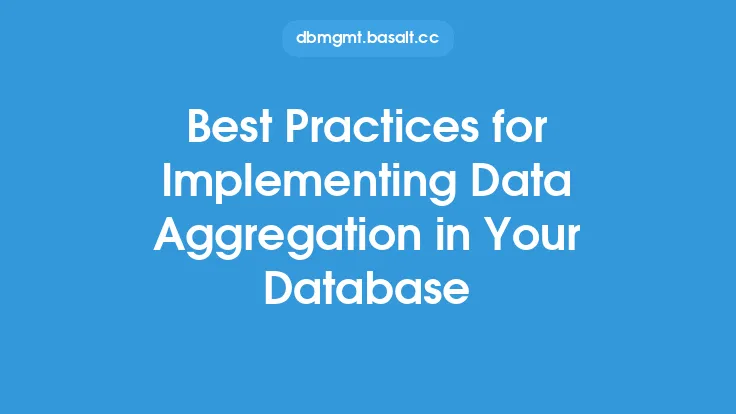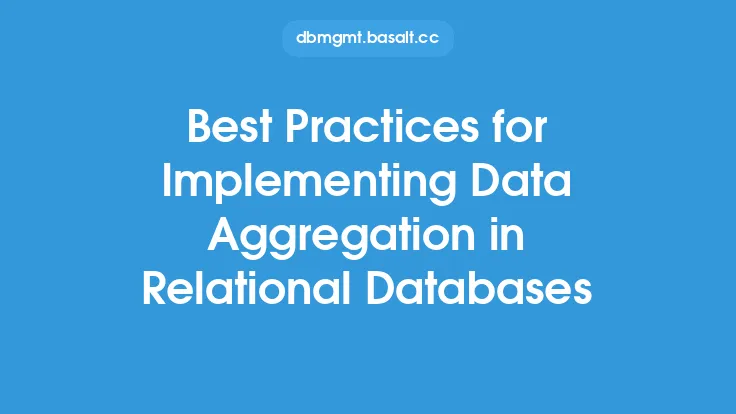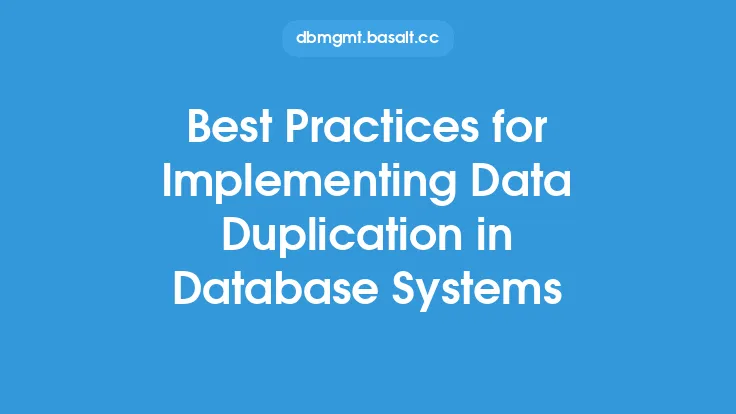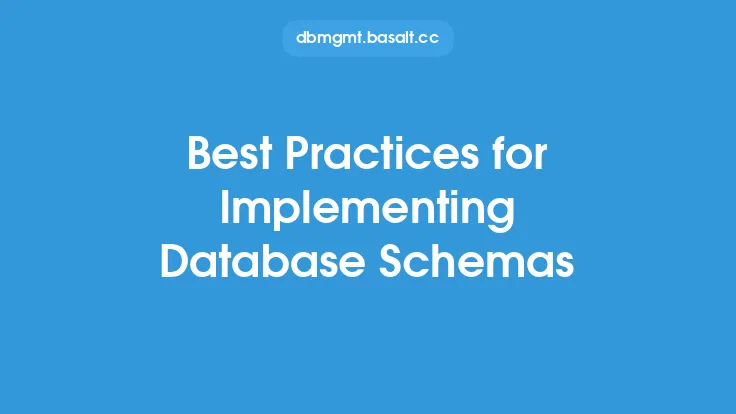Implementing materialized views in a database can be a powerful technique for improving query performance and reducing the load on the database. However, it requires careful planning and consideration to ensure that the materialized views are effective and do not introduce additional complexity or maintenance overhead. In this article, we will discuss the best practices for implementing materialized views, including design considerations, implementation strategies, and maintenance techniques.
Design Considerations
When designing materialized views, there are several factors to consider. First, it is essential to identify the queries that will benefit from materialized views. These are typically queries that are executed frequently, return a large amount of data, or involve complex joins or aggregations. Next, consider the data that will be included in the materialized view. This should be a subset of the data in the underlying tables, and should be chosen to minimize the amount of data that needs to be stored and maintained. It is also important to consider the frequency with which the data in the materialized view will need to be updated, as this will impact the complexity of the implementation and the resources required to maintain the view.
Implementation Strategies
There are several strategies for implementing materialized views, each with its own advantages and disadvantages. One common approach is to use a database trigger to update the materialized view whenever the underlying data changes. This approach ensures that the materialized view is always up-to-date, but can introduce additional overhead and complexity. Another approach is to use a scheduled job to periodically update the materialized view. This approach can be less complex and overhead-intensive, but may result in the materialized view being out-of-date for short periods. A third approach is to use a hybrid strategy, which combines the use of triggers and scheduled jobs to update the materialized view.
Indexing and Partitioning
Indexing and partitioning are two techniques that can be used to improve the performance of materialized views. Indexing involves creating an index on one or more columns of the materialized view, which can speed up query execution by allowing the database to quickly locate specific data. Partitioning involves dividing the materialized view into smaller, more manageable pieces, which can improve query performance by reducing the amount of data that needs to be scanned. Both indexing and partitioning can be used to improve the performance of materialized views, but require careful planning and consideration to ensure that they are used effectively.
Data Consistency and Integrity
Data consistency and integrity are critical considerations when implementing materialized views. Because materialized views store data in a separate location from the underlying tables, there is a risk that the data in the materialized view may become out-of-date or inconsistent with the underlying data. To mitigate this risk, it is essential to implement mechanisms for ensuring data consistency and integrity, such as using transactions to update the materialized view and the underlying tables, or using checksums or other data validation techniques to detect errors or inconsistencies.
Maintenance and Refresh
Materialized views require regular maintenance to ensure that they remain up-to-date and effective. This includes refreshing the materialized view to reflect changes to the underlying data, as well as monitoring the performance of the materialized view and making adjustments as needed. There are several strategies for refreshing materialized views, including complete refresh, incremental refresh, and log-based refresh. Complete refresh involves re-creating the materialized view from scratch, which can be time-consuming and resource-intensive. Incremental refresh involves updating the materialized view only with the changes that have occurred since the last refresh, which can be faster and more efficient. Log-based refresh involves using a log of changes to update the materialized view, which can be the most efficient approach of all.
Security and Access Control
Security and access control are important considerations when implementing materialized views. Because materialized views store data in a separate location from the underlying tables, there is a risk that unauthorized users may be able to access the data in the materialized view. To mitigate this risk, it is essential to implement robust security and access control mechanisms, such as using roles and privileges to control access to the materialized view, or using encryption to protect the data in the materialized view.
Monitoring and Troubleshooting
Finally, it is essential to monitor the performance of materialized views and troubleshoot any issues that arise. This includes monitoring the query performance, storage usage, and maintenance overhead of the materialized view, as well as troubleshooting any errors or inconsistencies that occur. There are several tools and techniques that can be used to monitor and troubleshoot materialized views, including database logs, query analysis tools, and data validation techniques. By using these tools and techniques, database administrators can ensure that materialized views are operating effectively and efficiently, and make adjustments as needed to optimize their performance.





